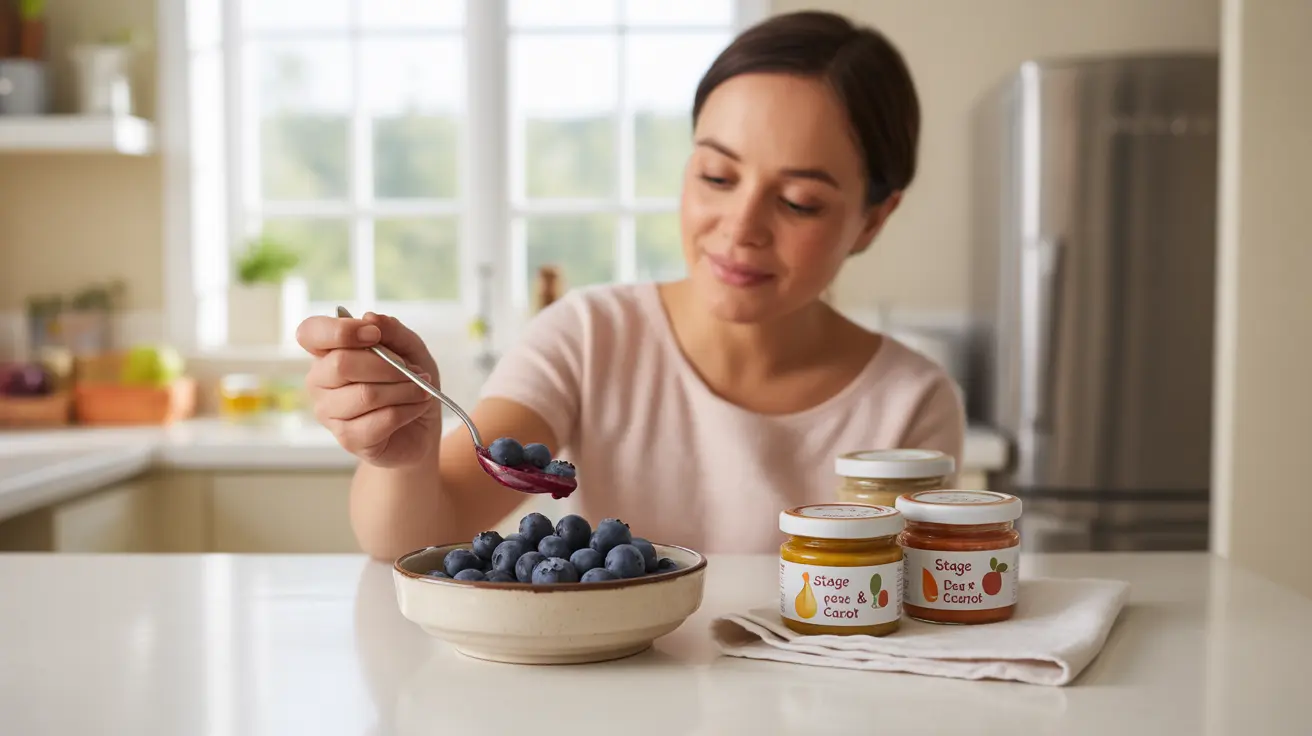As your baby grows and starts exploring solid foods, you might be wondering about introducing nutrient-rich fruits like blueberries into their diet. These tiny, vibrant berries pack a powerful nutritional punch and can be an excellent addition to your baby's developing palate when introduced at the right time and in the proper way.
Understanding when and how to introduce blueberries safely is crucial for your baby's health and development. Let's explore everything you need to know about incorporating this superfood into your little one's diet.
When Can Babies Start Eating Blueberries?
The ideal time to introduce blueberries to your baby is around 6 months of age, coinciding with when they begin eating solid foods. However, this timeline assumes your baby shows signs of readiness for solids, including:
- Good head and neck control
- Ability to sit upright with minimal support
- Shows interest in food
- Can move food to the back of their mouth with their tongue
- Has lost the tongue-thrust reflex
Always consult with your pediatrician before introducing any new foods to your baby's diet, including blueberries.
Nutritional Benefits of Blueberries for Babies
Blueberries offer an impressive array of nutrients that support your baby's growth and development:
- Vitamin C for immune system support
- Antioxidants for cellular health
- Fiber for digestive health
- Natural sugars for energy
- Vitamin K for bone health
- Essential minerals including manganese
These nutrients play crucial roles in your baby's development, making blueberries an excellent choice for early solid feeding.
Safe Preparation Methods
Size and Texture Considerations
The way you prepare blueberries should evolve with your baby's age and eating abilities:
- 6-9 months: Puree completely smooth
- 9-12 months: Mash or cut into quarters
- 12+ months: Cut in half or serve whole if baby has mastered chewing skills
Safety Tips for Serving
Follow these essential guidelines when preparing blueberries:
- Always wash thoroughly
- Remove any stems
- Check for and discard any mushy or moldy berries
- Test the berry's firmness before serving
- Supervise your baby while eating
Creative Ways to Serve Blueberries
Make blueberries more exciting and accessible for your baby with these preparation ideas:
- Mix with plain yogurt
- Blend into smooth purees with other fruits
- Combine with infant oatmeal
- Add to homemade baby food combinations
- Create naturally sweetened compotes
Watching for Allergic Reactions
While blueberry allergies are relatively rare, it's important to monitor your baby for any adverse reactions when first introducing them:
- Skin rashes or hives
- Digestive issues
- Breathing difficulties
- Swelling around the mouth or face
Follow the three-day waiting rule when introducing blueberries for the first time to easily identify any potential reactions.
Frequently Asked Questions
- At what age can I safely introduce blueberries to my baby's diet?
You can safely introduce blueberries around 6 months of age, when your baby starts solid foods and shows signs of readiness. Always prepare them appropriately for your baby's age and eating abilities.
- What are the health benefits of feeding blueberries to babies?
Blueberries provide essential nutrients including vitamin C, antioxidants, fiber, and vitamin K. These nutrients support immune function, brain development, digestive health, and overall growth.
- How should blueberries be prepared to prevent choking hazards for babies?
For babies 6-9 months, puree blueberries completely. For 9-12 months, mash or quarter them. After 12 months, cut in half or serve whole if your baby can handle them safely. Always supervise feeding times.
- Can blueberries cause allergic reactions in babies, and how can I watch for symptoms?
While blueberry allergies are uncommon, watch for signs like rashes, hives, digestive issues, or breathing difficulties. Introduce them alone first and wait three days before introducing other new foods.
- What are some safe and nutritious ways to mix blueberries with other baby foods?
Blend blueberries with yogurt, infant oatmeal, or other fruit purees. You can also mix them into smoothies, compotes, or combine them with other age-appropriate foods like mashed banana or avocado.




